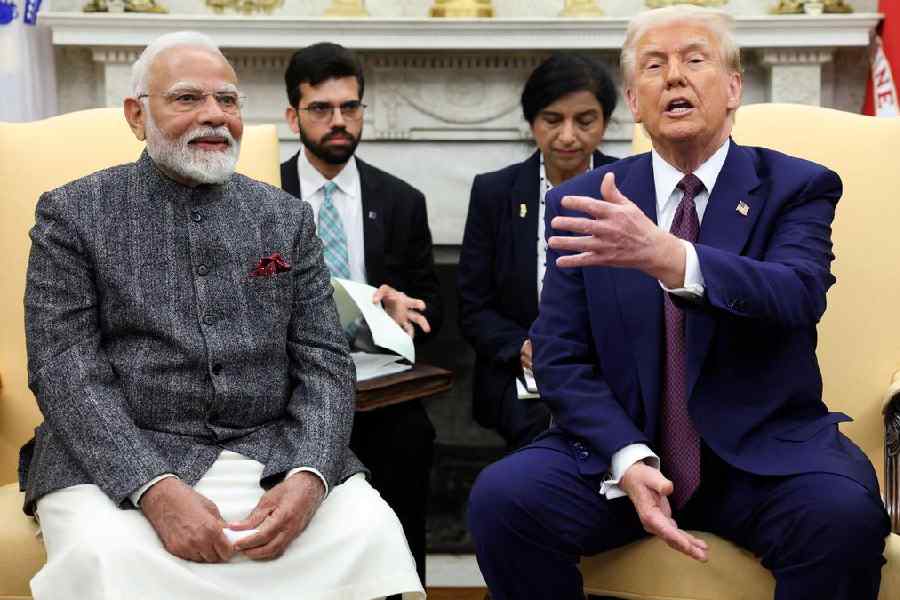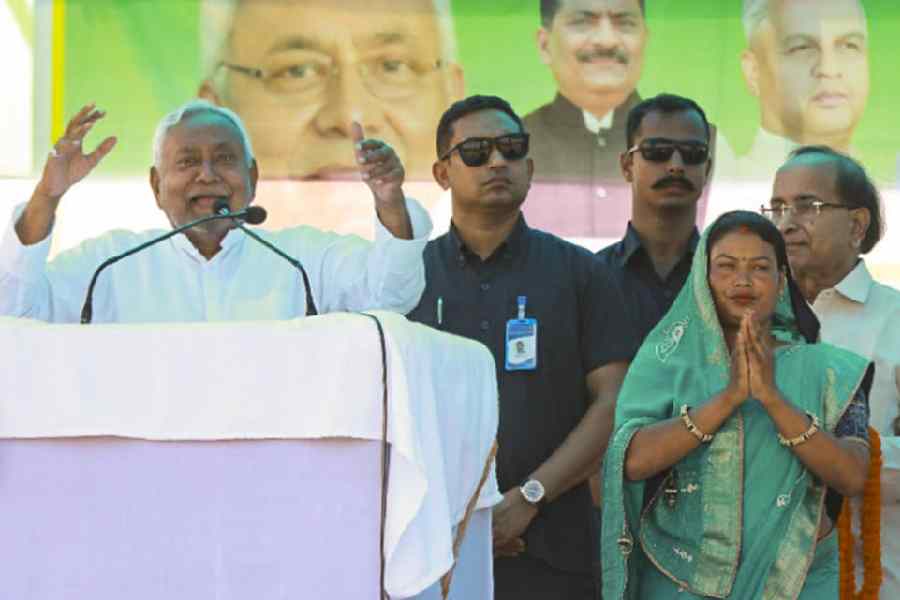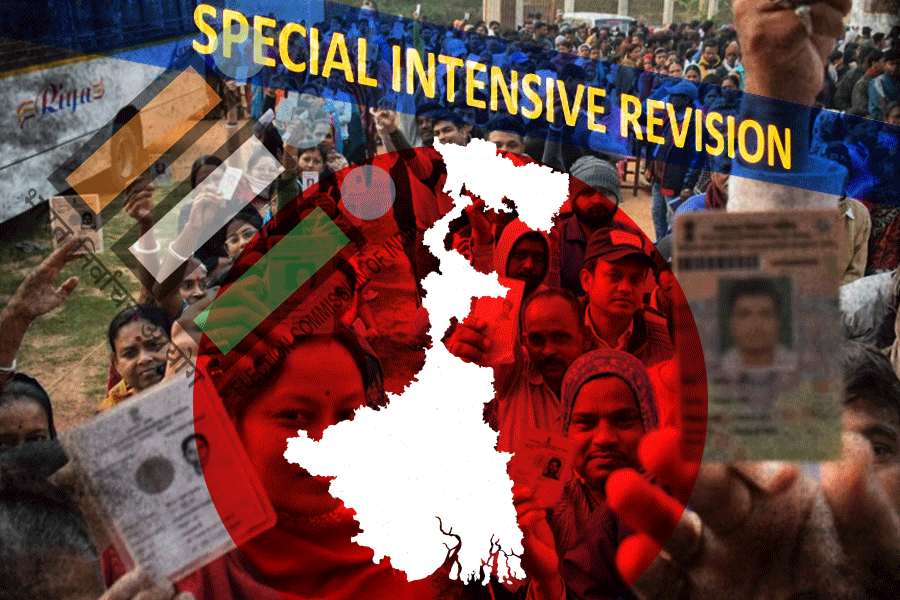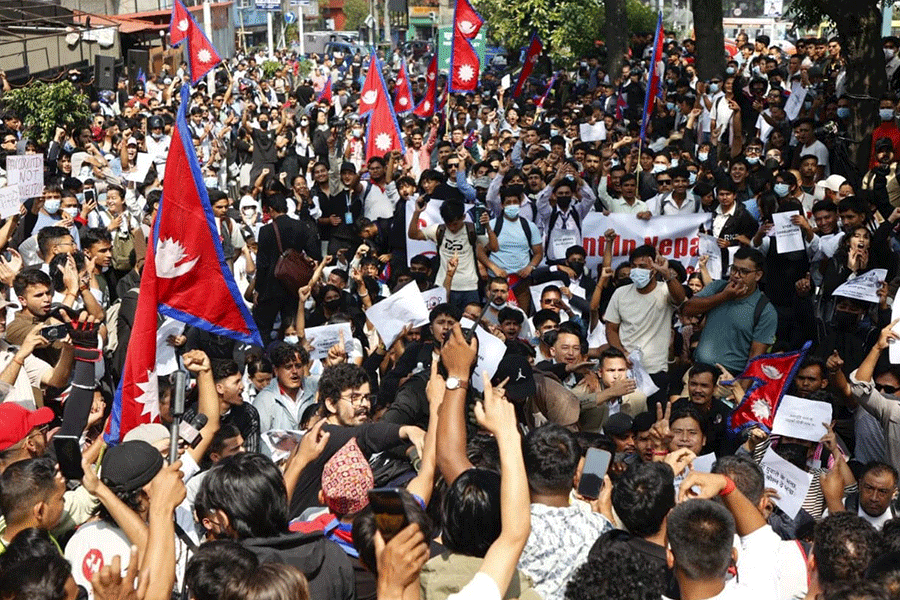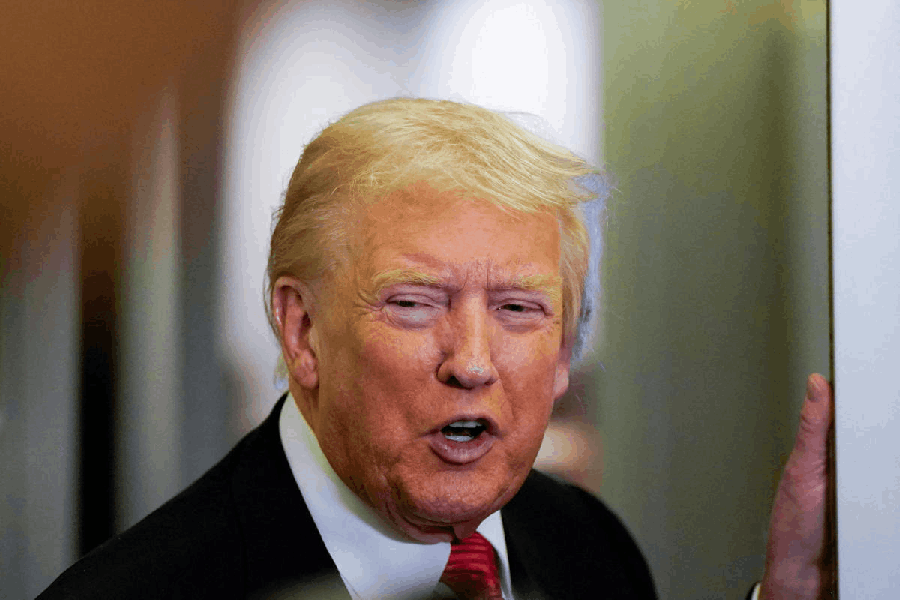 |
| (From left) Sayak Mitra, Sunil Chandra Pal and Sujit Karmakar at the exhibition at Studio21. (Bishwarup Dutta) |
The influence of photography and film as graphic forms is the immediate point of reference in Post Production, the ongoing show at Studio21.
Inaugurated on April 9 at the Dover Terrace address, the display features works by young Sayak Mitra, Sunil Chandra Pal and Sujit Karmakar — all of whose art reveals a marked fascination with both media.
The title of the show takes off from the post-production process; the follow-up to the making of film or a series of photographs as such after the raw images have been delivered. In another sense, the display offers an insight into the digitisation process of art itself and the influence thereof on young creative minds.
It’s an interesting process to witness how art seeps into our everyday life.
In this digital age, it occupies large public spaces. As curator Manas Acharya explains, much of this populist art exists as a “vast expansion in the form of re-production or re-creation” as “common practices of contemporary art”.
Borrowing from popular culture in turn makes it “meaningful and relevant and evocative”. In Post Production, the three artists thus work with existing images in an essentially urban context; often iconic characters that offer up more than one aspect of relevance as the process of appropriation spins on. The thematic thread is of the here and now.
Sunil and Sujit work with acrylic on photomontages and enlarged bromide prints, which are then transferred and printed on canvas.
Sayak — the youngest of the trio — works exclusively with digital prints on archival paper. Sayak’s series of prints, titled Agonies of The Time, deals with the basic emotion of pain. He makes liberal use of the mass media, especially newspaper reports, to drive home his message; offering these up as a reflective mirror in a tonally effusive palette of ochres, greens and vermillion.
Sunil Chandra Pal offers up known figures and faces to fuel his imagination, a matte-grey-brown world that takes off from a well-established tradition of graphic novel art. Like the best in that media, his imagination can border on the radical.
Then there’s his penchant for metaphors: he places a leopard on a four-poster bed done up in rich linen, an image of decadence that he calls The Lair; paints a bound and gagged Cyrus Broacha in a piece called Sound of Silence and takes the fancy-dressed Shiva in a deerskin walking the city streets in Tandava On Earth, where the human is superimposed on the divine and just another jester turns god as passersby kneel in prayer on a central Calcutta byway.
In My City, he paints the everyday image of a flock of goats against a skyscraping backdrop; a bleak image of a herd mentality where the human instinct is lost forever.
Sujit Karmakar works with innocence lost. He chooses children’s faces, detailing larger bromide prints with his acrylic-on-canvas work. His art is well-finished; the retained realism is stark, which works well with his subjects. The recurrent metaphor of the safety-pin perhaps symbolises torn lives; paper boats and chai kettles people canvases to drive home his point.
In Post Production, each artist appropriates an image and recreates and represents it back in a unique manner. Given that premise, the subject of originality begs an answer. In this show, while the images may be everyday, their treatment is truly original: these works come across with an approach that questions so-called interpretation, offering up our society in image and context that is creatively stimulating.


